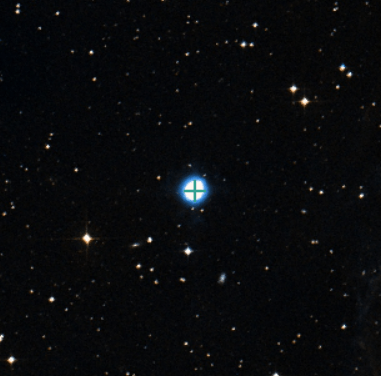DSO of the Month
Caldwell 59
AKA: Ghost of Jupiter; NGC 3242
Position: 10 hr 24.8 min -18 deg 38 min 33 sec
Due south at 21.50 (BST) on 15 April 2021
Caldwell 59, the Ghost of Jupiter.
Image: Simbad (http://simbad.u-strasbg.fr/simbad/)
Some readers might wonder why I have so many planetary nebulae as Deep Sky Objects of the Month, but as I have explained before they are the best deep sky objects to observe in light polluted skies. Several planetary nebulae look like planets in a small telescope and as its name indicates, the Ghost of Jupiter is no exception. Both William Herschel and William Henry Smyth noted the similarity of Caldwell 59 to Jupiter in both colour and size. However, its name was introduced in 1886 by the retired army officer Captain William Noble in his book, Hours with a Three-inch Telescope. Noble then became the first president of the BAA.
In a small telescope it looks like a small oval disc about the same size as Jupiter and has a bluish-green colour (insofar as any colour can be perceived by the naked eye). It is magnitude 8.6 which makes it about the same brightness as the Ring Nebula (M57). It lies in the large but indistinct constellation of Hydra and its main drawback is that it is very low in the sky. Even when it is due south, it is just nineteen degrees above the horizon and its magnitude is reduced (“extincted”) to about 9.5. It lies directly below Mu Hydrae (mag. 3.8) in a rather barren field. Mu Hydrae itself is to the west (or right) of the constellation of Crater after the brighter star Nu Hydrae and it is directly below (but a long way below) Gamma Leonis (Algieba). The planetary nebula is about two light years long and lies some 4,800 light years distant from us. In a large telescope (such as Hubble) it looks like a grey-blue eye and is sometimes called the Eye Nebula. The inner shells of the nebula were formed about 1,500 years ago. William Herschel first observed the nebula on 7 February 1785, and his son John Herschel observed it from the Cape of Good Hope, South Africa, in the 1830s, and numbered it as h3248.
ARCHIVE
